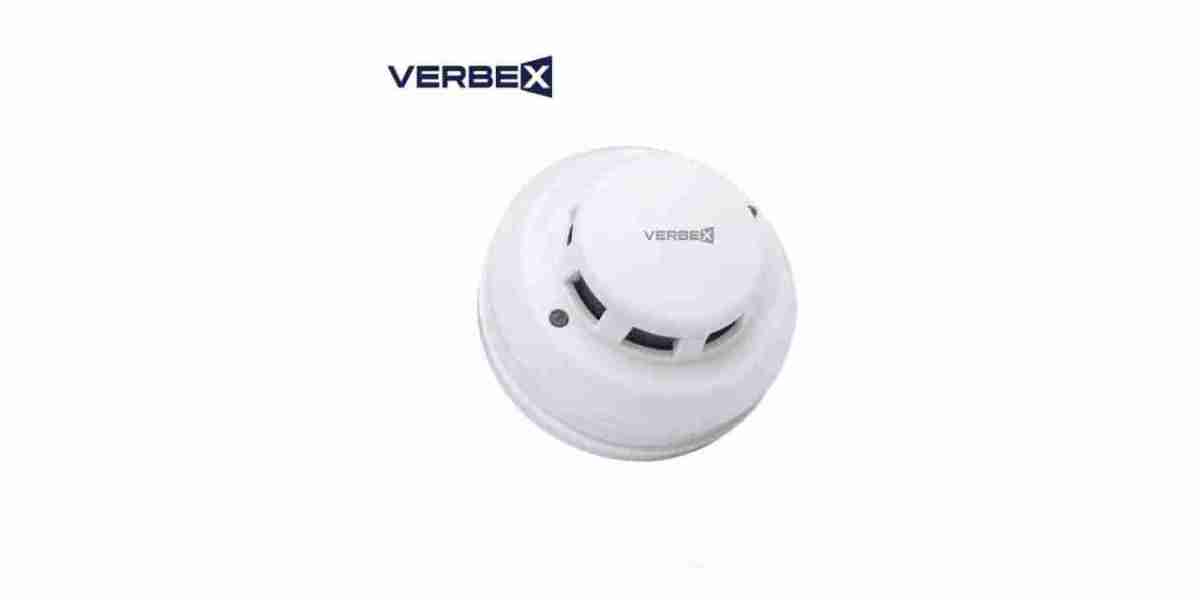Smoke detectors are an essential component of home safety, providing critical early warnings that can save lives in the event of a fire. While their importance is undeniable, it’s equally crucial to ensure that your smoke detectors are functioning properly. Testing and maintaining your smoke detector regularly is the best way to ensure it will work when you need it most. In this guide, we’ll walk you through the steps for testing and maintaining your smoke detectors, including tips on battery replacement, device lifespan, and common mistakes to avoid.
Understanding Different Types of Smoke Detectors
Before diving into testing and maintenance, it’s important to understand the types of smoke detectors and their functions. Different detectors have unique features, and understanding these can help you determine how to best maintain them.
Ionization Smoke Detectors
Ionization smoke detectors are highly sensitive to fast-flaming fires, which produce minimal smoke. These detectors work by ionizing the air within a sensing chamber using a small amount of radioactive material. When smoke enters the chamber, it disrupts the ionization process, triggering the alarm. These detectors are often used in areas where quick, fast-flaming fires are a concern.
Photoelectric Smoke Detectors
Photoelectric smoke detectors are more sensitive to smoldering fires, which produce a lot of smoke without visible flames. These detectors use a light sensor to detect smoke particles. When smoke enters the sensing chamber, it scatters the light, setting off the alarm. These detectors are ideal for placement in bedrooms, hallways, or areas where slow-burning fires are more likely.
Dual-Sensor Smoke Detectors
Dual-sensor smoke detectors combine the best features of both ionization and photoelectric technologies, providing more comprehensive protection. These detectors are suitable for homes where both fast-flaming and smoldering fires are possible, and they are highly effective at providing early detection for various types of fires.
General Guidelines for Placement
Proper placement of smoke detectors is crucial for their effectiveness. Installing them in the right locations ensures they detect smoke quickly and alert you as soon as possible. Below are some general guidelines for placement.
National Standards and Local Building Codes
According to the National Fire Protection Association (NFPA), smoke detectors should be installed on every level of your home, including the basement and attic, and outside each separate sleeping area. Always check local building codes for any additional requirements specific to your area.
Recommendations from Fire Safety Authorities
NFPA 72 recommends placing smoke detectors on the ceiling or high on the wall, at least 10 feet away from cooking appliances to avoid false alarms.
Placement in Hallways and Near Bedrooms: Install detectors in hallways or in the rooms themselves to provide early alerts during sleep.
Placement in Specific Areas of the Home
Smoke detectors should be strategically placed throughout your home. Here’s a look at where to install them based on specific areas of your home.
Kitchen: Balancing Proximity and False Alarm Reduction
Kitchens are prone to smoke, steam, and cooking fumes, which can easily trigger false alarms. However, placing a smoke detector too far from the kitchen could result in delayed detection of a fire.
Best practice: Install smoke detectors at least 10 feet away from the stove or oven to minimize false alarms, but still close enough to detect any potential fire hazards.
Bedrooms: Ensuring Early Warning During Sleep
Since most fires occur at night when people are asleep, it's crucial to have a smoke detector in or near every bedroom. Early detection allows residents to evacuate in time.
Best practice: Install a smoke detector inside or near each bedroom or in the hallway outside of the rooms.
Basements and Attics: Addressing Unique Architectural Features
Basements and attics are often overlooked when it comes to smoke detector placement, but these areas are vulnerable to fire. It’s essential to place detectors in these spaces, especially if they contain flammable materials.
Best practice: Install smoke detectors at the top of basement stairways or in the attic to ensure proper coverage.
Hallways and Stairways: Facilitating Safe Evacuation Routes
Hallways and stairways are essential areas to install smoke detectors. These areas provide a quick route for evacuation, and detectors here will ensure that everyone in the house is alerted promptly.
Best practice: Install smoke detectors at the top and bottom of stairwells and in hallways leading to sleeping areas.
Height and Installation Specifics
The height at which you install your smoke detector can significantly affect its performance.
Ideal Height for Wall and Ceiling Installations
Ceiling installation: Smoke detectors should be placed on the ceiling, as smoke rises. Place the detector at least 4 inches away from the nearest wall to ensure proper airflow and detection.
Wall installation: If you must install a smoke detector on the wall, it should be 4 to 12 inches from the ceiling.
Avoiding Locations Near Windows, Doors, and Vents
Avoid placing smoke detectors near windows, doors, and vents. Air currents can push smoke away from the detector, preventing it from detecting smoke properly.
Smoke Detector Maintenance and Testing
Regular testing and maintenance are critical to keeping your smoke detectors in good working order. Here's how to ensure your detectors are always ready to function when needed.
Regular Testing Schedules
Test your smoke detector at least once a month by pressing the test button. You should hear a loud alarm sound if the device is functioning correctly. If you don’t hear an alarm, check the batteries and make sure the detector is installed correctly.
Battery Replacement and Device Lifespan
Replace the batteries in your smoke detector at least once a year. Even if the low-battery alert hasn’t gone off, it's a good habit to replace the batteries annually.
Replace the smoke detector itself every 10 years. Over time, the sensing mechanisms in the detector can degrade, making it less effective.
Key Mistakes to Avoid
Some common mistakes can compromise the effectiveness of your smoke detectors:
Placing smoke detectors too close to kitchens or bathrooms, where steam or cooking smoke could trigger false alarms.
Ignoring maintenance or skipping regular tests and battery replacements.
Not following manufacturer instructions for installation and placement.
It’s essential to avoid these mistakes to ensure that your smoke detectors are working correctly.
Emerging Technologies and Innovations in Smoke Detection
Technology has advanced significantly in the field of smoke detection. Today, smart smoke detectors are becoming increasingly popular. These devices can connect to your home’s Wi-Fi network, allowing you to receive alerts on your smartphone if the alarm is triggered, even if you’re away from home.
Benefits of Interconnected Alarms for Comprehensive Coverage
Smart smoke detectors and interconnected alarm systems can be especially useful in large homes or buildings. When one detector senses smoke, the alarm can trigger other detectors throughout the house, ensuring that everyone is alerted, no matter where they are. If you're considering upgrading your safety system, it's also helpful to compare Smoke Detector Price in Bangladesh to find a smart option that fits your budget and needs.
Conclusion
Maintaining and testing your smoke detectors is just as important as placing them in the right areas. By following the guidelines for installation and maintenance, you can ensure that your home is protected by fully functioning smoke detectors. Regular testing, battery replacements, and awareness of common mistakes will enhance your fire safety efforts.
If you’re in Bangladesh, consider looking into the Smoke Detector Price in Bangladesh to find affordable options that meet your needs. Don’t wait until it’s too late—ensure that your smoke detectors are properly installed and maintained today to safeguard your home and loved ones.








